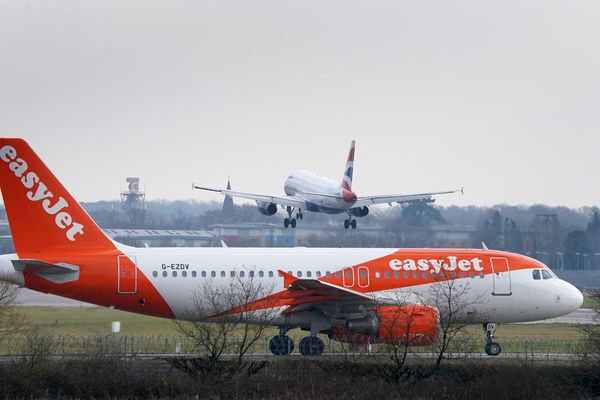When Barclays Cycle Hire, more commonly known as Boris Bikes, first rolled onto London’s streets in July 2010, few could have predicted just how radically they’d reshape the city. Fast forward 15 years, hire bikes aren’t just a mode of transport – they’re a cultural symbol.
They turn up in wedding snaps (congrats Charli XCX!), crowd the pavements of any party worth attending, and are as much a part of London life as black cabs and unlicensed pedicabs. London has now even been voted the best city in the world for cycling in a poll by DFDS.
But it wasn’t always this way. So how did the hire bike – an ungamely creature, let’s be honest – reverse its fortunes?
Today, bikes account for 56% of peak-time traffic in the City, and there are six times more of them on the roads than in 1999. Which is a full-blown transformation in how Londoners move and think.
Fifteen years ago, cyclists were the outliers. Those who dared to pedal to work (often in Lycra) were more likely to get side-eyes than praise. Bike lanes were rare, and often seen as an inconvenience by other road users. Hop into a black cab and you'd almost certainly get an earful about how bike lanes were killing the city.
Compared to other urban metropolises like Amsterdam where bikes have long been a priority, London’s uptake was slow. The infrastructure wasn’t there and the behavioural incentive to take up a bike wasn’t selling. It leaned hard on sustainability, which did not resonate with the wider public.
For a decade, Boris Bikes, now Santander Cycles, slowly became part of the city’s landscape. Names changed, logos rotated, but the bikes remained. Yet it wasn’t until the pandemic that cycling got the boost it needed.
With lockdowns limiting travel and social lives shrinking to walks and park meetups, Londoners needed a reason and means to get out and about. Silly people responded by getting a dog, smarter ones hopped on a bike.
Cycling retailer Halfords reported a 63% year-on-year jump in bike sales between April and June 2020. On some lockdown days, cycling traffic in London spiked by 300%.
Safer than the tube on disease transmission, cheaper than an Uber, and infinitely more flexible - allow me to introduce the humble bicycle
Cycling was no longer just about fitness or sustainability – it became a social lifeline. Safer than the tube on disease transmission, cheaper than an Uber, and infinitely more flexible.
Post-Covid, the shift in mindset stuck. The daily train grind lost its appeal. Rising living costs made taxis less viable. Bikes, once a niche option, became the obvious alternative. And with the rise of e-bikes, cycling quickly got faster, easier, and more fun.
That freedom has also reshaped expectations. By 2023, usage of the original Boris bikes dropped to a ten-year low, with newer players like Lime rewriting the rules of what cycling in the city looked and felt like.
Tech has transformed cycling. Today’s e-bikes are sleek, smart, and accessible. You don’t need to hunt for a docking station or break a sweat, just unlock and go.
The marketing for Boris Bikes was always focused on sustainability, positioning them as the responsible choice: green, good for you, and great for the city. But that pitch only landed with a certain crowd.
Lime took a different approach – it’s not about sustainability, it’s about speed and convenience. And that’s something every transport user could relate to.
Today, 97% of Londoners are never further than two minutes from a Lime bike. No wonder phrases like ‘to Lime’ are sneaking into our vocabulary. The bikes are literally everywhere.
Lime has succeeded where Boris Bikes failed – taking cycling from functional to fashionable. Lime bikes feature in people’s dating profiles, fashion collaborations, and festival pictures. And they have celebrity influence and approval, featuring in Charli XCX’s wedding snaps and being the chosen model of transport for Lily Allen and James Norton on their first date.
Since their introduction in 2018, the bikes have quickly become part of the capital’s fabric. The green-and-white frame blends into its urban surroundings, and in many boroughs, the steady beep beep of a stolen bike is a more familiar sound than bird song.
In just over a decade, London has gone from a bike-skeptical city to one where cycling is part of the urban heartbeat. While the Boris Bikes sparked the shift, it was the unlikely collision of tech innovation, a global pandemic, and a new generation of riders that turned cycling into a full-blown cultural movement.
Today, cycling isn’t just practical – it’s personal. It’s stylish, social, and stitched into the fabric of daily life. And yes, it’s not perfect. Bike clutter, stolen Limes, and passive-aggressive bell dings are all part of the deal. But it’s progress.
The question now isn’t whether cycling belongs in London, it’s how far are we willing to ride with it?
Ella Britton is Strategy Director and Head of Creative Planning, Behave and Mediaplus UK







